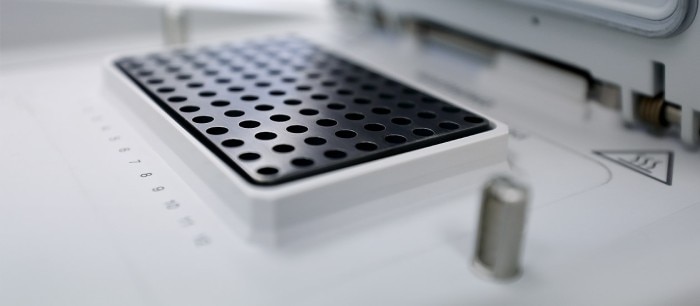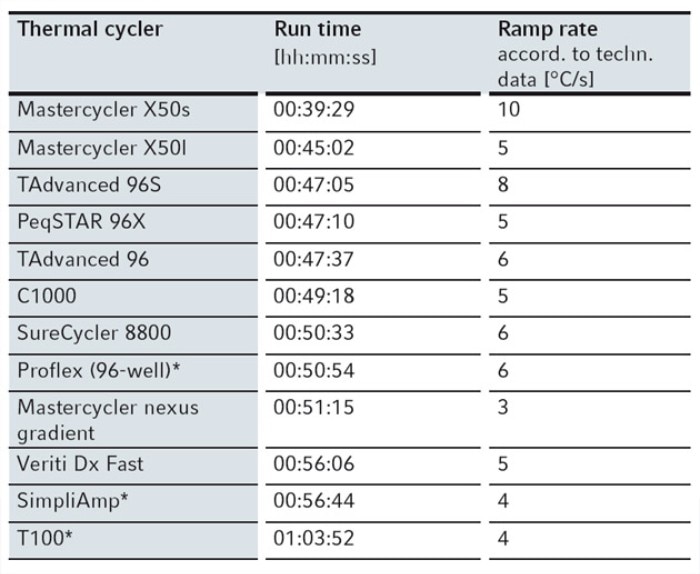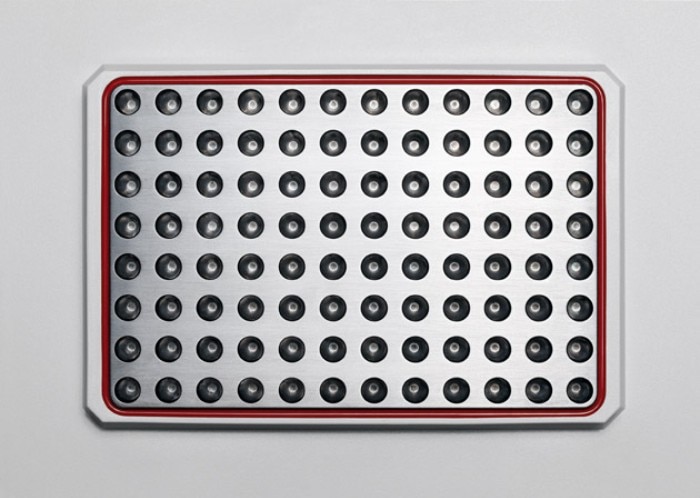MENU
PL | PLN
PL | PLN
-
- Wirówki stołowe
- Wirówka stojąca na podłodze
- Wirówki z chłodzeniem
- Mikrowirówki
- wirówki wielofunkcyjne
- Wirówki wysokoobrotowe
- Ultrawirówki
- Koncentrator
- IVD Products
- High-Speed and Ultracentrifuge Consumables
- Probówki wirówkowe
- Płytki wirówkowe
- Zarządzanie urządzeniem
- Zarządzanie próbkami i informacjami
Nie znaleziono wyników
Sugestie wyszukiwania

Mine is The Fastest Cycler Ever. Really?
Akademia laboratoryjna
- Biologia molekularna
- Amplifikacja i PCR
- Cyklery do PCR
- Eksperyment
Remember technical descriptions of new PCR-cyclers promising you heat ramps of 8 °C/s? But when you ran the unit yourself, the average speed was actually far lower. Why is the ramp rate important? The faster the reaction temperatures are reached, the more efficient the enzyme can work, and the more accurate are your results. Besides, you save time in the lab when the PCR run is completed in less than 60 min, for example. However, often the calculated run times differ from the actual time needed.
Why is the heating speed stated in a cycler brochure different from reality? The ramp rates published sometimes represent the maximum ramping speed for a very short time, whereas most of the heating and cooling happens at a lower speed. An “up to 8 °C” ramp rate fits better – like this the cycler really matches the speed promise since the term “up to” can mean anything between 0,1 °C and 8 °C in this example.
A much more reliable comparison of cycler ramp speeds is based on comparing real programs’ run times. By using the same reaction conditions, the same vessel types and numbers, and the same program, you can easily compare the time for a complete run. That time is a good indication for the speed-level of a PCR cycler.
A much more reliable comparison of cycler ramp speeds is based on comparing real programs’ run times. By using the same reaction conditions, the same vessel types and numbers, and the same program, you can easily compare the time for a complete run. That time is a good indication for the speed-level of a PCR cycler.
Przeczytaj mniej

Gold, silver, or aluminum?
The material of the cycler block has quite some impact on the performance of the cycler. Standard blocks are made of aluminum whereas the gold or silver blocks are also made of aluminum but have a cover coating of the noble metal mentioned. The coating is that thin that a broken gold-block cycler is still electronic waste and not worth a fortune…
The best and thereby fastest temperature conductivity can be reached by gold-coated blocks, followed by silver-coated ones. These materials have very good heat conducting properties that increase the ramp rates. In principle, the material/ coating does have a significant impact on the speed, but there are also other responsible factors such as thickness of the material and the size of the neighboring Peltier elements.
Przeczytaj mniej

Peltier elements
Apart from the material/ coating of the block, the related heating and cooling source is crucial for a high-quality PCR cycler. The temperature is adjusted by Peltier elements, a process also known as thermoelectric cooler.
The Peltier element is based on the Peltier function (developed by Jean Peltier). The flow of power inside the element ends up in a change of temperature. Depending on the direction of the power flow, the element can heat or cool.
The elements are smaller, lighter and less fragile compared to a compressor-based cooling. In contrast to heating foils, you can also use them for cooling. The drawback of the Peltier element is the high power needed for a relatively low temperature change. By using a fan, you can remove the heat from the element and improve the efficiency of the system.
Using a fan to remove the heat from the element improves system performance. That is why most PCR cyclers have one or more fans. To reduce the risk of contamination at the bench, the fan exhaust air should be directed to the back of the instrument.
For an optimal and safe usage of the PCR block, the Peltier elements should cover the complete block.
Block format types
For optimal PCR results, the reaction conditions should be optimized: thin-walled vessels and a reaction volume which can be temperature-treated in a good way. That means, the temperature transfer from the block towards the tube (and respectively the sample) should be homogenous. The more volume of the sample is surrounded by the metal well walls of the block, the better the temperature transfer. Years ago, most PCRs were performed in 0.5 mL vessels. Due to optimization, today, most people focus on 0.2 mL vessels, 0.1 mL strips, or 96-well PCR plates. Still, there are some applications where 0.5 mL vessels are useful.
There are 4 different blocks known as standard blocks:
- Universal block:
Combined pattern for 0.1, 0.2 and 0.5 mL vessels 0.2 mL vessel/ 96-well - PCR plate block:
Standard block for up to 96 vessels - 384-well block:
Optimal for high throughput applications in 384-well plates. - In-situ block:
Space for up to 4 slides to be used for in-situ PCR
Przeczytaj mniej


